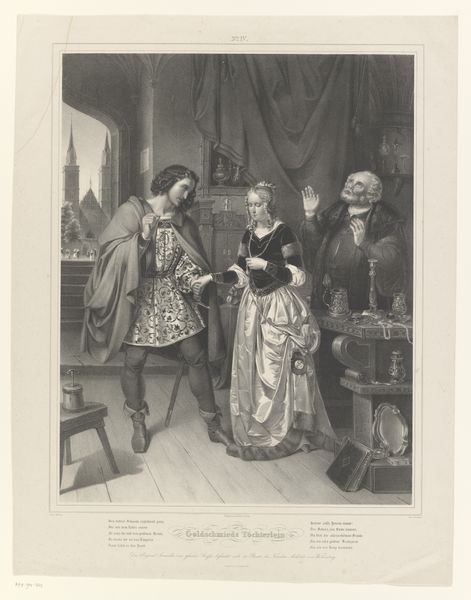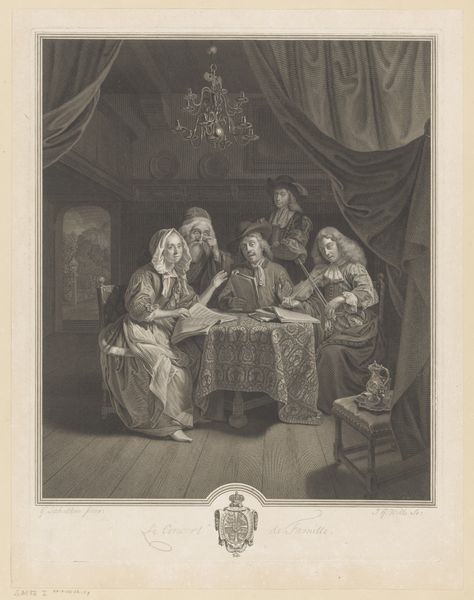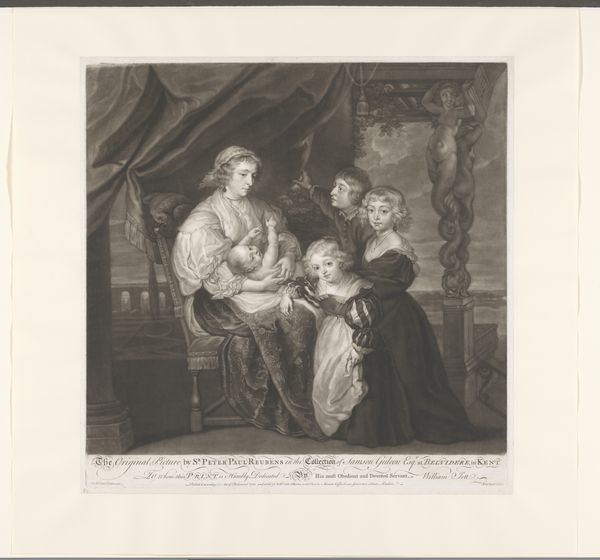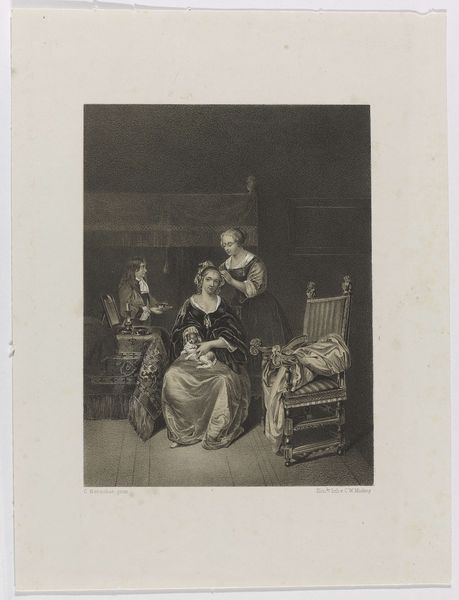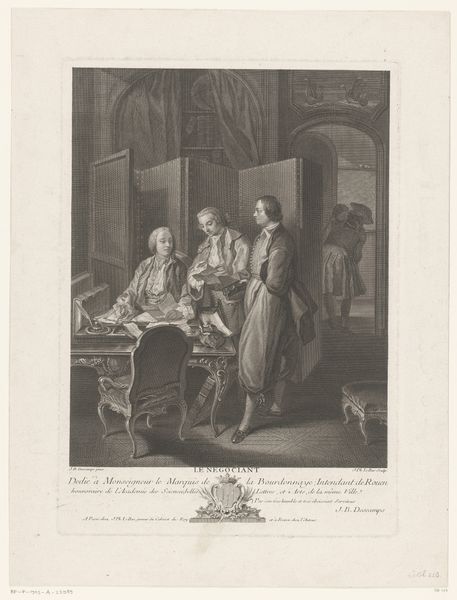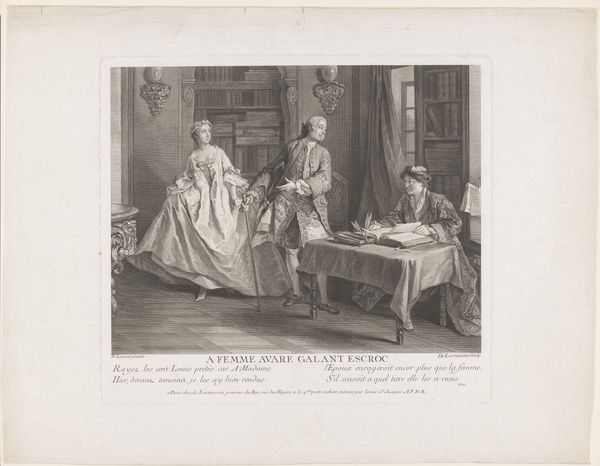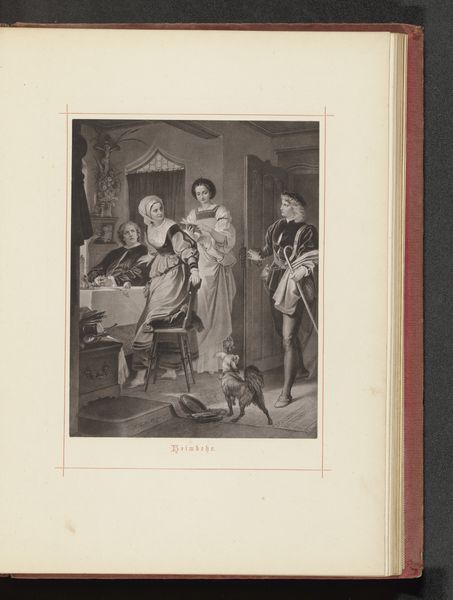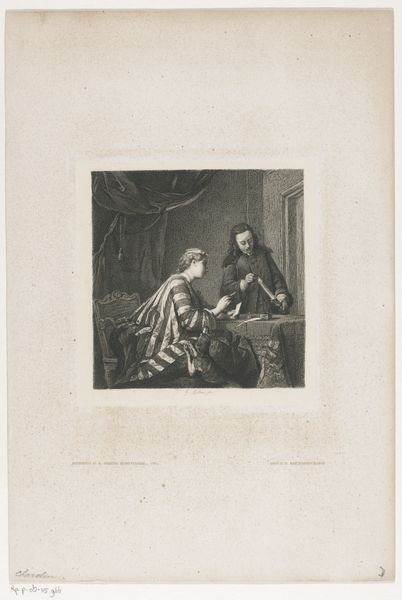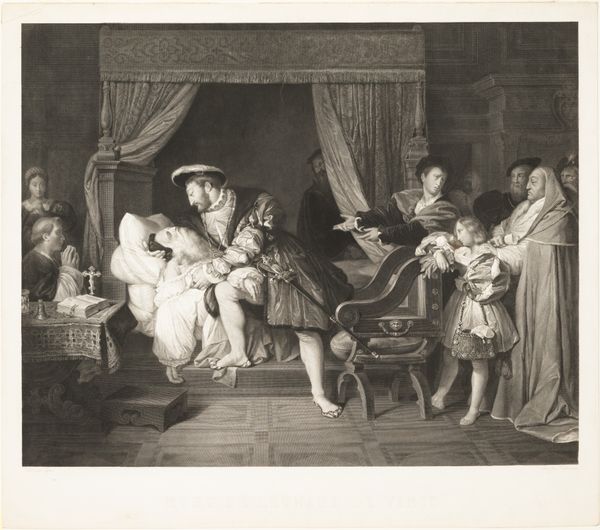
Dimensions: height 433 mm, width 341 mm
Copyright: Rijks Museum: Open Domain
This image by Johann Georg Wille, dating back to the 18th century, presents a man and two women indoors. The setting is a domestic space marked by a table set with reflective objects, and the clear presence of a bed behind a standing woman. Consider the visual weight of these common domestic objects; in iconography, reflective objects can symbolize vanity, but also introspection. They also act as portals, allowing the viewer to move between symbolic and literal meanings. The bed’s heavy presence draws the eye, connecting the scene to themes of intimacy and privacy. But it's not just the objects that speak, observe the gestures: the standing woman's posture suggests solemnity or concern, contrasting with the seated figures, whose interaction seems more intimate. Such arrangements and gestures remind me of earlier Renaissance depictions of the Annunciation, where similar postures convey moments of significant disclosure or decision. These echoes across centuries reveal how certain visual languages persist, shaped by collective memory.
Comments
No comments
Be the first to comment and join the conversation on the ultimate creative platform.

